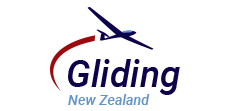Visiting Foreign Pilots
New Zealand is a country which offers unique opportunities for learning to glide and for cross-country soaring. Our geography is perfectly suited to giving pilots access to the full range of gliding conditions: From mountain to flat land, in thermal, convergence, anabatic, ridge, and wave conditions. All with relatively large areas of uncontrolled airspace just beckoning to the glider pilot!
We welcome overseas pilots. Most clubs provide for temporary overseas members, and with minimal fuss you can take part in the local club scene. Please remember that it is not realistic to expect to arrive at a club and to monopolise their equipment for a 50km or 300km badge flight! Commercial operators are more likely to be able to cater for intensive use of gliders.
Where to Go
Gliding Clubs can be found throughout New Zealand. You can view a list and map of clubs and their contact information.
The main land area of New Zealand is divided into North Island and South Islands. One-third of New Zealanders (kiwis) live in or around the North Island city of Auckland, one-third live in the rest of the North Island, and the remaining one-third live in the South Island.
In the South Island is the world renowned Omarama Soaring Centre – best known for its remarkable wave flying conditions and as the host site of the very successful 1995 World Gliding Championships and the 2007 World Grand Prix Final.
While the South Island Omarama site gets the most press internationally, the rest of New Zealand does provide remarkable gliding conditions. You will find gliding conditions to challenge the most seasoned pilot at a number of sites throughout both the North and South Islands; as well as conditions which suit any pilot looking to stretch their wings in a new environment.
Click here if you are looking for a great source of information on “Destination New Zealand”.
Can I fly as pilot-in-command in New Zealand?
As a visiting pilot you should bring your logbook to establish your track record and currency as a glider pilot. You will also need to show that your medical certification (from back home) is current; otherwise you may need to get a fresh medical declaration when you get to New Zealand.
If you want to fly as pilot-in-command while in New Zealand you will need to register with Gliding New Zealand (GNZ). This can be done through any GNZ affiliated club or commercial operator where you will be asked to complete a “Visiting Foreign Pilot Registration” (download form ADMIN 06 from this page) form and pay the fee, which varies from $36.25 to $145.00 depending on how much of the soaring season is left for you to enjoy.
Check with the individual club or commercial operator for further policies that it may have. Most will have a day fee or short-term membership fee – pretty reasonable, since you will be using their equipment!
Once you’ve satisfied the above, and have been flight checked, you can fly under the direct supervision of an instructor of the relevant club or commercial operator. In this context, ‘direct supervision’ means that the instructor is present at the airfield of takeoff , conducts a pre-flight briefing including guidance on the areas through which the flight is to be conducted, and monitors the progress of the flight (either from the ground or from another aircraft).
If you are more experienced and wish to fly without such direct supervision, you need a GNZ Cross-Country Pilot Certificate (XCP). Your foreign qualifications and experience may be recognised as equivalent to the XCP requirements – this is done by completing a validation form (download form OPS 06 from this page) and doing a flight check to BFR standard. The CFI will assess your qualifications and experience and, all being well, also endorse your logbook to show that you have met the XCP requirements. Then away you go!
If you are qualified as a gliding instructor back home and wish to instruct in New Zealand, you will need to become a fully paid-up flying member of the relevant club or commercial operator and have approval from its CFI. This will involve a BFR appropriate to the instructor rating you wish to exercise, and the issue of a GNZ instructor rating.
If the above sounds complicated, click here for a Flow Chart!

